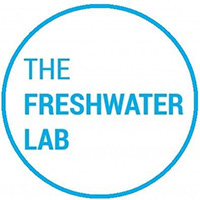Modern society is acclimated to the drain, a liquid parallel to the garbage can. The cyclicality of water suggests another model – drops that morph from rain to lakewater to fog and ice as they move through a number of natural and engineered systems. When we easily dispense with water, we break its cycle and create waste that comes back to haunt us. In an age when we long for water during droughts and fear it during intense storms, a non-wasteful orientation must emerge. There is no choice but to balance new water extremes through reservoirs and reuse. We need to close the loop to emulate nature and the ways water circulates through many landscapes and forms. Closing the loop of the Sanitary and Ship Canal marks a crucial step in transforming the Rust Belt to the Water Belt. Instead of diverting water from Chicago as a southbound wastestream, we can recycle it to support industry in water-stressed communities. This would help protect Lake Michigan for human needs and ecosystem viability.
Water recycling sheds its utopian glaze with every update about the West’s once-in-a-1200-year drought, the demise of the Colorado River, or the imminent collapse of the Ogallala Aquifer. Even in proximity to deep lakes and wide rivers, groundwater levels across the world are bottoming out. Irreplaceable water sources are disappearing and humans cannot continue to treat viable water as waste.
The Great Lakes watershed does not face acute water stress, but it has responsibility and incentive to grow its available supply while ensuring the lakes don’t go the way of other water bodies. The time has come for Chicago to undertake its next wondrous feat of water engineering. Reengineering the world’s most engineered waterway in the era of climate change looks like this.
Here’s what stays the same: Rain and drains still meet in Chicago’s combined sewer system, slosh through the deep tunnel, and undergo treatment at wastewater plants.
The Metropolitan Water Reclamation District of Greater Chicago (MWRD) runs seven treatment plants. We propose that each of these plants is enhanced to produce water for specific purposes like industry, agriculture, or even emergency supply. Most will provide water for industrial processes in communities whose water source has collapsed and, as a result, request drinking water from Lake Michigan. Lake Michigan is not limitless. In fact, the volume of water that the State of Illinois can withdraw from the lake is set by the U.S. Supreme Court. In order to both sustain our communities and enable economic growth, we must reorient ourselves and turn wastewater into the basis for sustainable industry.
Unlike wealth that generates waste, wealth that comes from waste must be distributed equally with direct benefits for those who disproportionately experience the failure of existing infrastructure. For example, the introduction of recycled water can both increase overall supply and raise revenue to help make water bills more affordable and to retrofit dangerous lead service lines.
In conjunction with water recycling, biogas can be derived from wastewater and help with the transition to renewable energy. Other valuable minerals and metals can also be harvested as part of water recycling. In fact, the MWRD is already doing some of this. It has teamed up with Ostara Nutrient Recovery Technology for the world’s biggest harvest of nutrients from wastewater. In a massive closed loop, Ostara harvests phosphorus and nitrogen at MWRD’s Stickney Plant and turns it into Crystal Green fertilizer. As a continuous release fertilizer, Crystal Green supercharges the growth of plants without overloading them with nutrients or relying on a petrochemical base. Whereas conventional fertilizers sit at the top of fields and easily runoff during rain storms, Crystal Green goes right to the roots of plants. This helps prevent harmful algae blooms which cause dead zones. Crystal Green shows how wastewater can yield socially beneficial products that bring revenue back into Greater Chicago’s water reclamation district.
Every site of existing water treatment can be extended to full water reclamation and resource recovery that transforms waste into revenue-generating products whose building blocks, in turn, can be reclaimed in an ongoing feedback loop.


